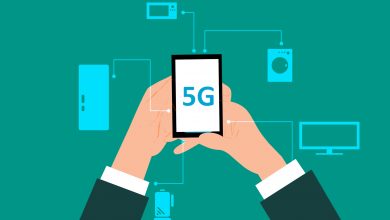5G Technology Health Effects And Recommendations

The first Commission established in the USA has released a final report on the basis of health effects of 5G technology.
This report included various recommendations that address the requirement of public education on RF health studies, wireless hazards, RF measurements, fiber optic, cell antennas setbacks rather than commercial warning signs, wireless deployment, and wildlife protection.
After researching and reviewing extensively testimony in a series of meetings on the course of a year, the commission highlighted the scarcity of a single definition for 5G, insufficient safety for 5G technology, and the safety standards for wireless technologies that 5G is largely a marketing concept.
The commission also defines the concern that the FCC has a big history of being accountable to industry over the desires of individuals and communities.
The commission shall:
- Look into the health effects from RF radiation ejected from the waves in the 30-300 GHz with the range of the electromagnetic spectrum that falls somewhere between infrared waves and microwaves, and which are needed with the rollout of 5G technology.
- Evaluate the health effects of 5G technology, which needs small cell towers to be placed at a distance of 250m from each other at telephone pole height from the ground and will operate in conjunction with the 3G and 4G technology infrastructure.
- Get testimony from the scientific community consisting but not limited to electrical engineers and physicists, the medical community consisting but not limited to oncologists and cellular experts, the wireless technology industry including but not limited to cell phone businesses and businesses working on the development of autonomous vehicles which will depend on 5G technology, as well as other organizations and members of the public with an interest in 5G technology.
The commission prepares and publishes a final report of its findings and recommendations. The reports shall:

- Outline the risks and advantages associated with 5G technology running in conjunction with the 3G and 4G technology infrastructure.
- Make a strategy, if deemed essential, to limit RF radiation exposure from 5G or lesser generation technology depending upon electromagnetic waves.
- Consists of a public policy statement on 5G wireless systems, that either announces the technology safe or outlines actions needed to protect the health of humans and the environment.
- Reckon alternatives to 5G technology that will accelerate information flow volumes and speeds without the use of electromagnetic waves that emit high levels of radiation.
- Provide any recommendations for proposed legislation developed by the commission.
- The commission required under paragraph II to the speaker of the president of the senate, the house of representatives, the house clerk, the governor, the senate clerk, and the state library on or before November 1, 2019, and shall submit the final report on or before November 1, 2020.
Some Recommendation:
The recommendations were approved by the majority of the commissioners with a general agreement that they should partner with government agencies to have the FCC standards reevaluated and updated.
- Need the most appropriate agencies of the State of New Hampshire include links on its websites that contain warnings and information about RF-radiation from all sources, but particularly from 5G small cells deployed on public rights-of-way as well as showing the proper use of cell phones to decrease the exposure to RF-radiation. In addition, public service releases on print media, radio, television, and the internet should periodically appear, warning of the health risks associated with radiation exposure.
2. Need of pole or other structure in the public rights-of-way that grip a 5G antenna indicating RF-radiation. This label should be at eye level and legible from nine feet away.
3. Public libraries and schools should migrate from RF wireless connections for laptops, computers, pads, and other devices, to hard-wired or optical connections within a 5 year period starting when funding becomes available.
4. Signal strength measurements must be gathered at all wireless facilities as part of the commissioning process and as compulsory by the state or municipal ordinances. Measurements are also to be gathered when changes happen to the system that might affect its radiation, like changes in the software controlling it. In the event that the measured power for a wireless facility increases radiation thresholds, the municipality is empowered to immediately have the facility taken offline.
5. Install new protocols for performing signal strength measurements in areas around wireless facilities to evaluate characteristics of signals known to be deleterious to human health as has been documented via peer-reviewed research efforts. The protocols will also enable the summative effects of multiple radiation sources to be measured.
6. Need for new wireless antenna situated on a state or municipal right-of-way or on private property be set back from businesses, residences, and schools. This should be enforceable by the municipality during the permitting process unless the owners of residences, businesses, or school districts waive this restriction.
7. Develop the educational offerings by the NH Office of Professional Licensure and Certification (OPLC) for home inspectors to include RF intensity measurements.
8. Recommend strongly, all new cell phones and all other wireless devices sold are equipped with updated software that can stop the phone from radiating when positioned against the body.
9. Adopt and promote a statewide position that strongly encourages and moving forward with the deployment of internally wired connections, fiber optic cable connectivity, and optical wireless to serve all commercial and public properties statewide.
10. Further science studies are required in conjunction with the medical community outlining the characteristics of expressed clinical symptoms related to radiofrequency radiation exposure.
11. The State of New Hampshire should engage our Federal Delegation to legislate that under the National Environmental Policy Act, the FCC does an environmental impact statement as to the effect on New Hampshire and the country as a whole from the expansion of RF wireless technologies.
12. In addition, encourage public and commercial buildings, especially healthcare facilities, to establish RF-radiation free zones where visitors and employees can seek refuge from the effects of wireless RF emissions.
13. The State of New Hampshire should engage agencies with appropriate scientific expertise, consisting of ecological knowledge, to develop RF-radiation safety limits that will protect the plants, trees, insects, birds, and pollinators.
Read More: Environmental Effects of 5G




